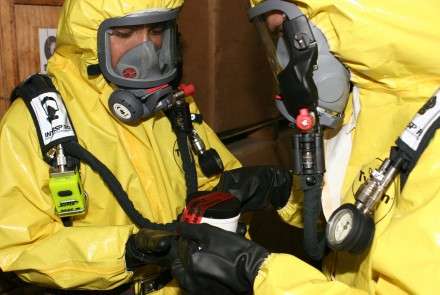Blowfly protein key to terror poison antidote

A protein that costs the Australian sheep industry hundreds of millions of dollars each year may also pave the way to an antidote for chemical warfare agents.
Having a better understanding of the structure of this protein will not only benefit farmers by enabling design of more effective pesticides, but is the first step towards creating an antidote for victims of chemical warfare agents, such as sarin gas.
"The silver lining in the development of insecticide resistance in blowflies is that nature might have created a potential treatment for human organophosphate poisoning," said lead author Dr Colin Jackson of the Research School of Chemistry.
Organophosphates are commonly used insecticides which act by blocking nerve signals in insects. The effectiveness of these insecticides has been decreasing in recent years due to insects developing resistance.
"The Australian sheep blowfly has been exposed to organophosphates for decades and now produces a mutated protein, called alpha-esterase-7, which has evolved to soak up and detoxify the organophosphate, so flies can now survive being sprayed," said Dr Jackson.
In addition to their use as insecticides, organophosphates are highly toxic to humans, meaning farmers who are accidentally poisoned and victims of terror attacks using organophosphate-based nerve agents, such as sarin gax or VX, are very difficult to treat. An estimated hundreds of thousands of human fatalities globally occur every year as a result of organophosphate poisoning.
"Even with the very best treatment, the mortality rate for organophosphate poisoning is quite high and we really need more effective treatments," said Dr Jackson.
The research team took the gene for the organophosphate resistant protein from the blowfly and engineered it so that large amounts of the protein could be produced in the bacterium Escherichia coli.
"These bacteria are basically little cellular factories which can make a large amount of protein. We were able to get them to produce large amounts of the resistance protein, which then formed crystals. By analysing how X-rays were scattered by the crystal, we were able to determine the structure of the protein," said Dr Jackson.
"Now that we have the structure of the protein we can design better and more effective insecticides that flies are not resistant to.
"Furthermore, this is a really good starting point towards developing a more effective antidote to organophosphate poisoning. We know this protein breaks down organophosphates in flies so we can use that knowledge to help people."
Provided by Australian National University

















